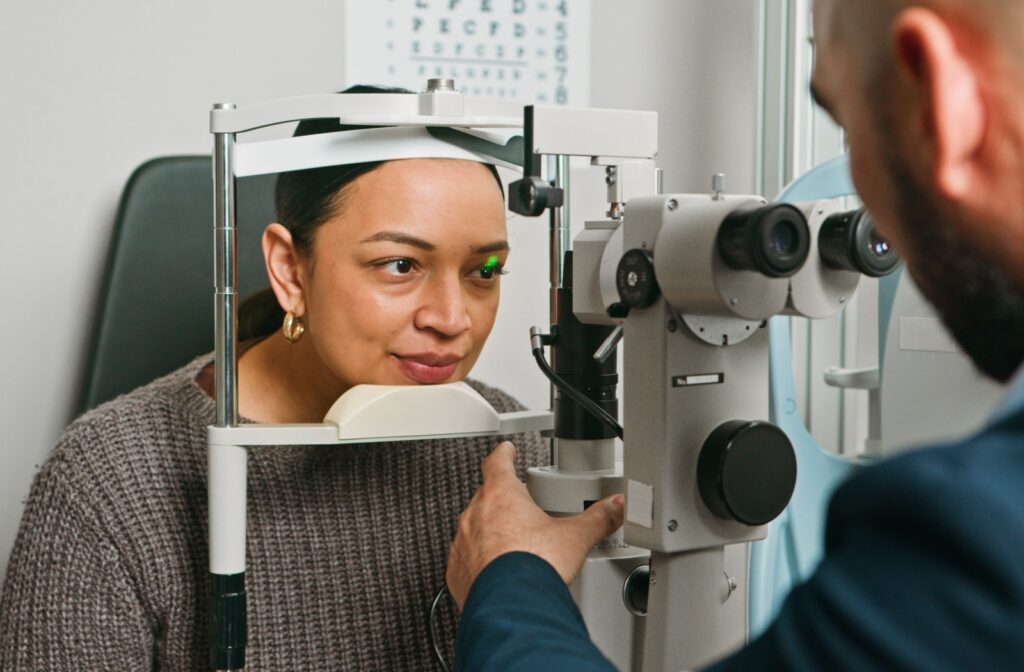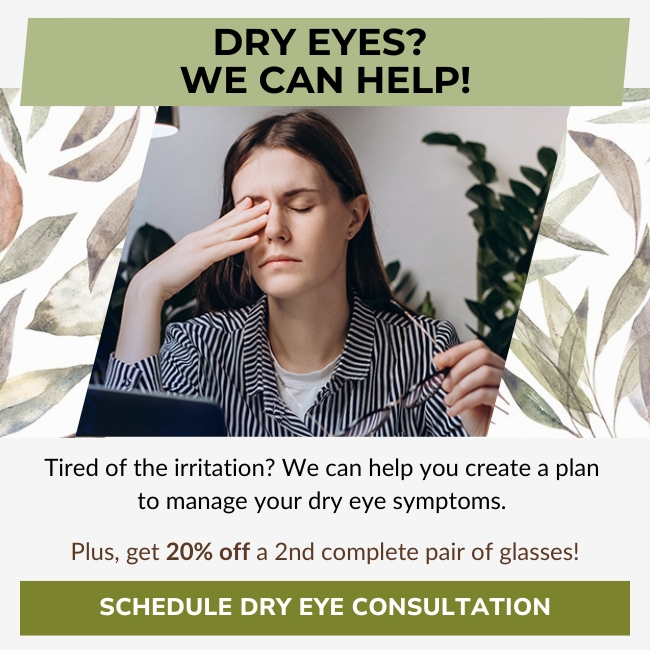Eye strain can creep in after a long day of screen time, studying, or reading your favourite book under poor lighting. While it’s rarely serious, it’s definitely uncomfortable, and it can interrupt your focus, productivity, and overall well-being. So, how long does eye strain last? The good news is that eye strain is usually temporary and often improves with rest. In most cases, symptoms subside within a few hours; however, if the root cause isn’t addressed, the discomfort may persist or become more frequent.
What Is Eye Strain?
Eye strain—often called digital eye strain or computer vision syndrome—happens when the tiny muscles responsible for focusing your vision get overworked. This is especially common when staring at screens for long periods without taking breaks, but it can also be triggered by reading, driving, or performing detailed visual tasks for extended periods.
Screens are a major culprit in today’s digital world. The effort required to maintain focus up close, combined with reduced blinking and screen glare, can all contribute to fatigue. While anyone can experience eye strain, it’s more likely if your environment or visual habits aren’t optimal, even if your eyes are otherwise healthy.
How Long Do the Symptoms Last?
Most cases of eye strain resolve quickly—within a few hours—once you’ve rested your eyes or stepped away from the screen. However, if you consistently ignore symptoms or don’t address contributing factors (like poor lighting or an outdated prescription), the discomfort can become more frequent and last longer.
Chronic digital eye strain might linger for days or flare up each time you return to work or study. If that’s the case, it’s a sign you may need an updated prescription, better work ergonomics, or an eye exam to rule out underlying conditions like dry eye or uncorrected refractive errors.
Common Symptoms of Eye Strain
Eye strain doesn’t usually sneak up on you—it’s pretty noticeable when it hits. Here are some signs to watch for:
- Tired or heavy-feeling eyes
- Dry, irritated, or watery eyes
- Blurred or double vision
- Headaches, especially behind the eyes or temples
- Redness in or around the eyes
- Trouble concentrating
- Neck and shoulder tension
If any of these symptoms feel familiar, it might be time to take a break or adjust your visual environment.
How to Prevent Eye Strain
Luckily, a few simple tweaks to your routine can go a long way toward preventing or easing digital eye strain.
1. Follow the 20-20-20 Rule
Every 20 minutes, look at something 20 feet away for at least 20 seconds. It’s a quick reset for your eyes and helps prevent the muscle fatigue that leads to strain.
2. Blink More Often
It sounds simple, but when we’re focused on screens, we blink less—sometimes half as often as normal. This can cause dry eye symptoms and irritation. Make a conscious effort to blink regularly to keep your eyes moist and comfortable.
3. Adjust Your Environment
Ensure your screen is positioned approximately an arm’s length away and slightly below eye level. Minimize glare from overhead lighting or windows, and adjust your screen brightness to match the surrounding lighting.
4. Use Artificial Tears
Preservative-free eye drops can help soothe dryness and improve comfort, especially when working in a dry or air-conditioned environment.
5. Update Your Prescription
Wearing the wrong glasses—or none at all if you need them—can worsen eye strain. An up-to-date prescription tailored for screen distance can make a world of difference.

Could It Be Something More Than Eye Strain?
Sometimes, eye strain is worsened by an underlying issue. A comprehensive eye exam can uncover these contributing factors:
- Dry eye disease: If your eyes feel gritty, sore, or watery even when you’re not using a screen, dry eye could be the culprit. Your optometrist can help identify this condition and recommend treatment, such as prescription drops or lifestyle changes.
- Uncorrected vision problems: If you have myopia (nearsightedness), hyperopia (farsightedness), astigmatism, or age-related conditions like presbyopia, your eyes may work overtime to focus, especially up close. This can lead to strain and headaches if not corrected properly.
How Often Should I See an Eye Doctor?
The Canadian Association of Optometrists recommends that adults between the ages of 18 and 64 have their eyes examined at least every 2 years, and annually if they’re over 65 or have certain health conditions. However, if you’re experiencing persistent eye strain, don’t wait for your next check-up—book an appointment and talk to your optometrist about it.
Early diagnosis and personalized solutions can help relieve your symptoms and protect your long-term eye health.
When to See a Professional
If your eye strain doesn’t go away after rest or keeps coming back, it’s time to check in with an eye care provider. Long-term discomfort shouldn’t be ignored, especially if it’s interfering with your work or well-being. An eye exam can identify what’s causing your symptoms and help you find lasting relief—whether it’s with glasses, treatment for dry eye, or simple lifestyle adjustments.
Say Goodbye to Eye Strain
You don’t have to live with eye strain. Small changes in your habits and work environment can have a significant impact on your comfort and productivity.If eye strain is becoming a daily issue, or you’re overdue for a check-up, Dr. Chris Schell in Barrie is here to help. Our team offers personalized care to support your vision and comfort at every stage of life. Contact us today to book your eye exam and start seeing more clearly—and comfortably.



